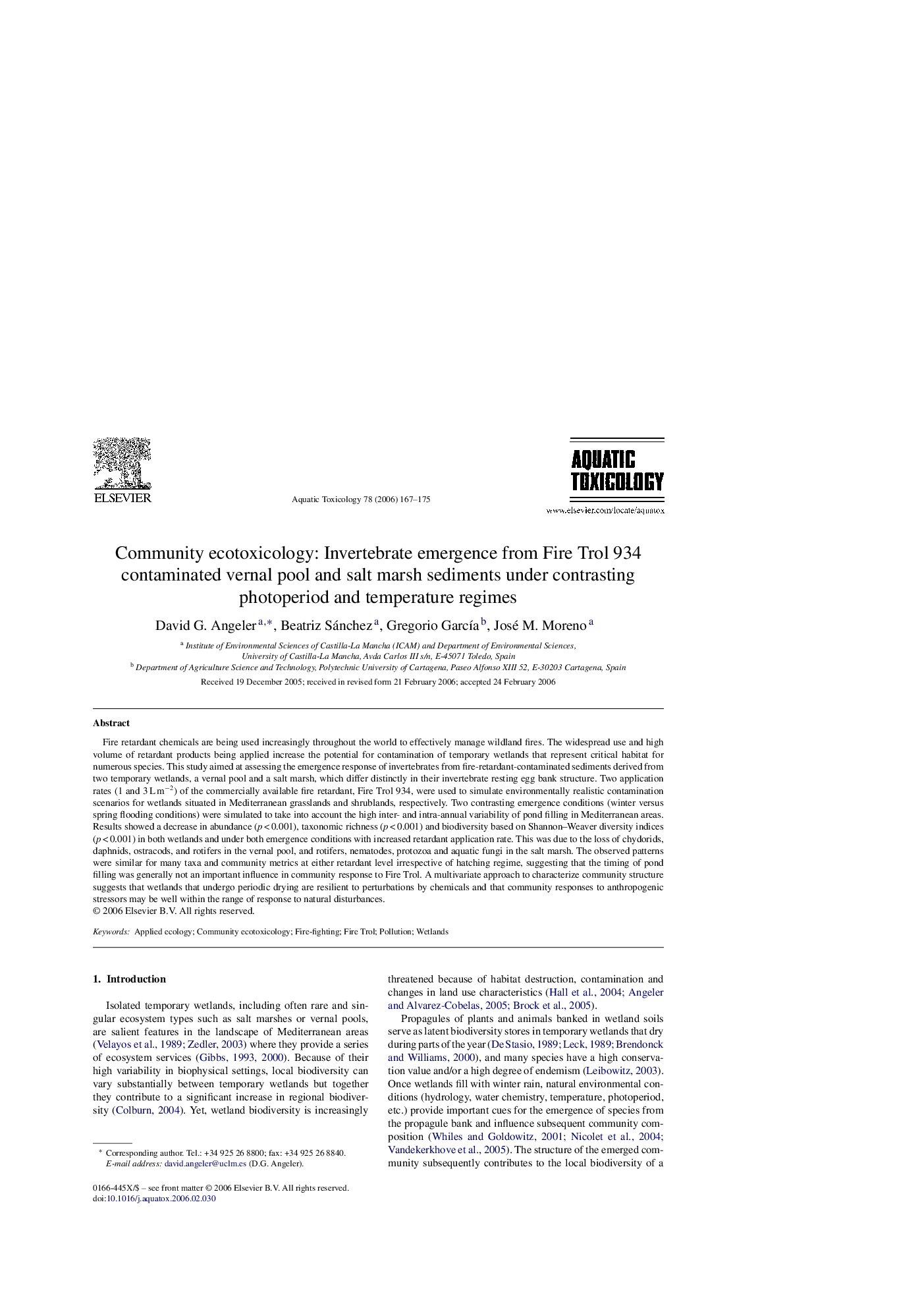| Article ID | Journal | Published Year | Pages | File Type |
|---|---|---|---|---|
| 4531280 | Aquatic Toxicology | 2006 | 9 Pages |
Fire retardant chemicals are being used increasingly throughout the world to effectively manage wildland fires. The widespread use and high volume of retardant products being applied increase the potential for contamination of temporary wetlands that represent critical habitat for numerous species. This study aimed at assessing the emergence response of invertebrates from fire-retardant-contaminated sediments derived from two temporary wetlands, a vernal pool and a salt marsh, which differ distinctly in their invertebrate resting egg bank structure. Two application rates (1 and 3 L m−2) of the commercially available fire retardant, Fire Trol 934, were used to simulate environmentally realistic contamination scenarios for wetlands situated in Mediterranean grasslands and shrublands, respectively. Two contrasting emergence conditions (winter versus spring flooding conditions) were simulated to take into account the high inter- and intra-annual variability of pond filling in Mediterranean areas. Results showed a decrease in abundance (p < 0.001), taxonomic richness (p < 0.001) and biodiversity based on Shannon–Weaver diversity indices (p < 0.001) in both wetlands and under both emergence conditions with increased retardant application rate. This was due to the loss of chydorids, daphnids, ostracods, and rotifers in the vernal pool, and rotifers, nematodes, protozoa and aquatic fungi in the salt marsh. The observed patterns were similar for many taxa and community metrics at either retardant level irrespective of hatching regime, suggesting that the timing of pond filling was generally not an important influence in community response to Fire Trol. A multivariate approach to characterize community structure suggests that wetlands that undergo periodic drying are resilient to perturbations by chemicals and that community responses to anthropogenic stressors may be well within the range of response to natural disturbances.
